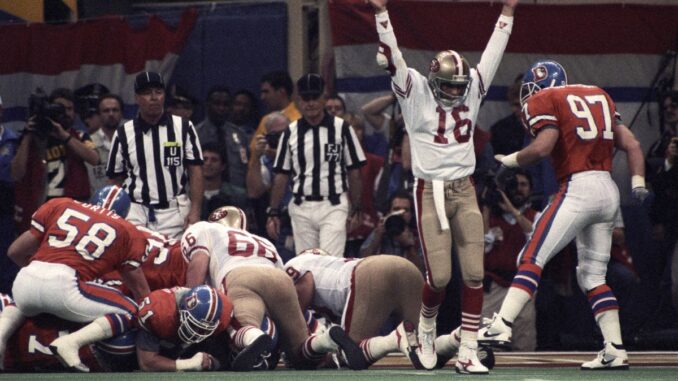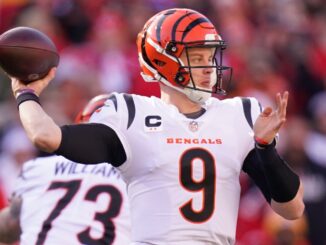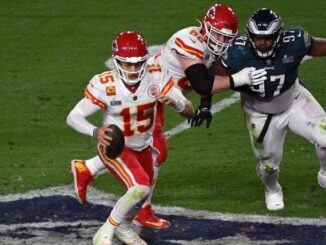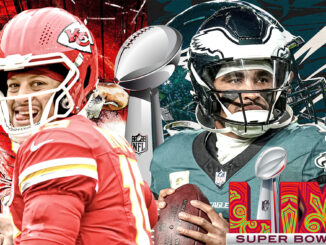
The Super Bowl is one of the most-watched sporting events in the world, and it has become a cultural phenomenon in the United States. Every year, millions of people watch the game, the halftime show, and the commercials. But the Super Bowl is more than just a game; it is a celebration of football and its history.
From its humble beginnings as a championship game between two rival leagues, the Super Bowl has grown into a spectacle that captures the entire nation’s attention. The game has seen some of the greatest players and coaches in football history, and it has produced some of the most memorable moments in sports history. The Super Bowl has given us countless moments of gridiron glory, from Joe Namath’s guarantee to David Tyree’s helmet catch.
In this article, we will journey through the history of the Super Bowl, from its inception to the present day. We will explore the game’s evolution, the legendary players and coaches who have made their mark on the sport, and the cultural impact that the Super Bowl has had on American society. Join us as we relive some of the greatest moments in football history and celebrate the game that has become a national obsession.
Origins and Evolution of the Super Bowl
The First AFL-NFL World Championship Game
The Super Bowl, initially known as the AFL-NFL World Championship Game, was first played on January 15, 1967, at the Los Angeles Memorial Coliseum. The game resulted from the merger agreement between the American Football League (AFL) and the National Football League (NFL) that was signed in 1966. The AFL and NFL were rival leagues that competed for players and fans, and the merger was an attempt to end the rivalry and create a unified professional football league in the United States.
The first AFL-NFL World Championship Game was played between the AFL’s Kansas City Chiefs and the NFL’s Green Bay Packers. The Packers won the game 35-10, and quarterback Bart Starr was named the game’s Most Valuable Player (MVP).
Merger and Birth of the Super Bowl
The success of the first AFL-NFL World Championship Game led to the merger of the AFL and NFL in 1970. The merged league was divided into two conferences, the AFC and NFC, and the Super Bowl became the championship game of the NFL.
The first Super Bowl under the new format was played on January 11, 1971, between the AFC’s Baltimore Colts and the NFC’s Dallas Cowboys. The Colts won the game 16-13, and quarterback Johnny Unitas was named MVP.
Decades of Dominance
The Super Bowl has since become one of the most-watched television events in the United States, and the game has featured some of the most memorable moments in sports history. Teams like the Pittsburgh Steelers, San Francisco 49ers, and New England Patriots have dominated the game, winning multiple championships.
The Super Bowl has become more than just a football game in recent years. The halftime show, which features some of the biggest names in music, has become a spectacle, and the commercials that air during the game have become almost as popular as the game itself.
Overall, the Super Bowl has evolved from a simple championship game between two rival leagues to a cultural phenomenon that has become an integral part of American sports and entertainment.
Iconic Super Bowl Moments
The Super Bowl has produced some of the most memorable moments in sports history. From historic upsets to unforgettable halftime shows, the big game has given fans plenty to discuss over the years. Here are some of the most iconic Super Bowl moments:
Historic Upsets
One of the most famous upsets in Super Bowl history came in 1969 when the New York Jets shocked the world by defeating the heavily-favored Baltimore Colts in Super Bowl III. Led by quarterback Joe Namath, the Jets were considered 18-point underdogs, but Namath famously guaranteed victory before the game and then delivered on his promise.
Another historic upset came in Super Bowl XLII, when the New York Giants defeated the undefeated New England Patriots. The Patriots were 18-0 heading into the game and were favored to win by 12 points. Still, the Giants pulled off the upset thanks to a dominant defensive performance and a miraculous catch by wide receiver David Tyree.
Unforgettable Halftime Shows
The Super Bowl halftime show has become a cultural phenomenon in its own right, with some of the biggest names in music taking the stage over the years. One of the most unforgettable halftime shows came in 1993, when Michael Jackson performed a medley of hits in front of a record-breaking audience of 133 million viewers.
Another iconic halftime show came in 2007, when Prince delivered a legendary performance in the pouring rain. The late musician played hits like “Purple Rain” and “Let’s Go Crazy” while performing in front of a massive projection of his silhouette.
Record-Setting Performances
The Super Bowl has also been the site of some incredible individual performances. In Super Bowl XXII, Washington Redskins quarterback Doug Williams became the first African-American quarterback to win a Super Bowl, throwing for a record 340 yards and four touchdowns in a blowout victory over the Denver Broncos.
Another record-setting performance came in Super Bowl LI, when New England Patriots quarterback Tom Brady led his team back from a 28-3 deficit to defeat the Atlanta Falcons in overtime. Brady threw for a Super Bowl-record 466 yards and two touchdowns in the comeback victory, cementing his legacy as one of the greatest quarterbacks ever.
Teams and Dynasties
Football dynasties have left an indelible mark on the sport’s history. The Super Bowl Era has seen many teams rise to the top and create a legacy that is still remembered today. Here are a few of the most notable teams in Super Bowl history.
Pittsburgh Steelers of the 1970s
The Steelers of the 1970s were a dominant force in the NFL, winning four Super Bowls in six years. The team was led by head coach Chuck Noll and featured a talented roster that included quarterback Terry Bradshaw, running back Franco Harris, and a legendary defense is known as the “Steel Curtain.” The Steelers’ success in the 1970s cemented their place in football history and set the standard for future dynasties.
San Francisco 49ers of the 1980s
The 49ers of the 1980s were another dominant force in the NFL, winning four Super Bowls in nine years. The team was led by head coach Bill Walsh and featured a talented roster that included quarterback Joe Montana, wide receiver Jerry Rice, and a powerful offense known as the “West Coast Offense.” The 49ers’ success in the 1980s revolutionized the game of football and set the stage for the high-powered offenses of today.
New England Patriots of the 2000s
The Patriots of the 2000s were a dynasty unlike any other, winning six Super Bowls in 18 years. Head coach Bill Belichick led the team. It featured a talented roster that included quarterback Tom Brady, tight end Rob Gronkowski, and a versatile defense known for its adaptability. The Patriots’ success in the 2000s has made them one of the most successful franchises in NFL history and cemented their place as one of the greatest dynasties of all time.
Overall, these teams and their dynasties have left an indelible mark on the sport of football. Their success has set the standard for future generations and inspired countless fans and players alike.
Super Bowl MVPs and Legends
The Super Bowl is the biggest stage in American football, and every year, the best players come together to compete for the ultimate prize. While winning the Super Bowl is a team effort, a few players always stand out above the rest. These players have earned the honor of being named the Super Bowl Most Valuable Player (MVP).
Quarterback Heroes
Quarterbacks are often the heroes of the Super Bowl, and many of the game’s greatest moments have been led by legendary quarterbacks. Players like Joe Montana, Tom Brady, and Terry Bradshaw have all won multiple Super Bowl MVP awards, cementing their place in football history.
Defensive Game-Changers
While quarterbacks often get the glory, the defensive players can make the biggest difference in the Super Bowl. Players like Ray Lewis, Dexter Jackson, and Von Miller have all won Super Bowl MVP awards for their outstanding defensive performances. These players can change the course of the game with a single play, and they are often the unsung heroes of the Super Bowl.
Coaches and Their Strategies
Super Bowl champions are not just made up of great players but also great coaches. Coaches like Bill Belichick, Tom Landry, and Chuck Noll have all won multiple Super Bowls and are considered some of the greatest coaches in football history. These coaches are known for their innovative strategies and their ability to motivate their players to perform at their best on the biggest stage.
In conclusion, the Super Bowl MVPs and legends are an important part of the game’s history. From quarterbacks to defensive players to coaches, these individuals have impacted the game that will be remembered for years to come.
The Business of the Super Bowl
The Super Bowl is not just a game; it is a massive business event that significantly impacts the economy, advertising, and broadcasting rights. In this section, we will explore the different ways the Super Bowl influences the business world.
Advertising Impact
The Super Bowl is one of the most significant advertising events of the year. Advertisers spend millions of dollars to create and air their commercials during the Super Bowl. In 2023, the cost of a 30-second ad during the Super Bowl was over $5 million. Advertisers see this as an opportunity to reach a massive audience and create brand awareness. Super Bowl ads are also known for their creativity and humor, making them highly anticipated by viewers.
Economic Influence
The Super Bowl has a significant impact on the local economy of the host city. The influx of visitors creates a boost in tourism, hospitality, and retail industries. According to a San Francisco Bay Area Super Bowl Host Committee study, Super Bowl 50 generated $240 million in direct spending and $350 million in economic activity for the Bay Area.
Broadcasting Rights and Viewership
The Super Bowl is one of the most-watched television events in the world. The broadcasting rights for the Super Bowl are highly coveted, and networks pay millions of dollars to secure them. In 2023, CBS had the broadcasting rights for Super Bowl 57 and charged advertisers over $5 million for a 30-second ad slot. The Super Bowl also has a massive international audience, with millions of viewers from around the world.
In conclusion, the Super Bowl is not just a game; it is a significant business event that significantly impacts the economy, advertising, and broadcasting rights. Advertisers see it as an opportunity to reach a massive audience, and the local economy benefits from the influx of visitors. The broadcasting rights are highly coveted, and networks pay millions to secure them.
Cultural Significance
The Super Bowl has become an integral part of American culture, attracting millions of viewers annually. It has also gained international appeal, with fans from around the world tuning in to watch the game. The event has evolved, with new traditions and trends emerging. In this section, we will explore the cultural significance of the Super Bowl and its impact on popular culture.
Super Bowl Sunday Traditions
Super Bowl Sunday has become a national holiday in the United States, with many traditions associated with the event. One of the most popular traditions is the Super Bowl party, where friends and family gather to watch the game and enjoy food and drinks. Another tradition is the Super Bowl commercials, which have become a cultural phenomenon in their own right. Companies spend millions of dollars to air their ads during the game, and viewers eagerly anticipate the latest commercials.
International Appeal
The Super Bowl has gained international appeal over the years, with fans from around the world tuning in to watch the game. The event has become a showcase of American culture, with the halftime show and commercials featuring some of the biggest names in music and entertainment. The game has also become a platform for international brands to showcase their products and services to a global audience.
Halftime Show Evolution
The Super Bowl halftime show has become one of the most-watched musical events in the world, with millions of viewers tuning in to watch the performance. The halftime show has evolved, with some of the biggest names in music and entertainment taking the stage. The show has become a platform for artists to showcase their talent and creativity with elaborate sets and choreography. In recent years, the halftime show has also become a platform for social and political messages, with artists using their performances to raise awareness about important issues.
Controversies and Scandals
The Super Bowl has had its fair share of controversies and scandals. In this section, we will take a look at some of the most notable ones.
Officiating Debates
One of the most common controversies surrounding the Super Bowl is the debate over officiating. Fans and analysts have criticized officials for making bad calls or missing important ones. One of the most infamous examples of this was in Super Bowl XL, where the Seattle Seahawks lost to the Pittsburgh Steelers. Many fans and analysts believed that the officials made several bad calls that cost the Seahawks the game.
Performance-Enhancing Drugs
Another controversial issue in the Super Bowl is the use of performance-enhancing drugs (PEDs). In 2013, the Baltimore Ravens’ Ray Lewis was accused of using deer antler spray, which contains a banned substance. Although Lewis denied the allegations and was not punished by the league, the controversy persisted.
Player Conduct Issues
In addition to officiating and PED controversies, the Super Bowl has seen its fair share of player conduct issues. One of the most notable examples of this was in Super Bowl XXXIII, where Atlanta Falcons safety Eugene Robinson was arrested the night before the game for soliciting a prostitute. Robinson, who had just won the Bart Starr Award for his off-field contributions, was widely criticized for his behavior.
Despite these controversies and scandals, the Super Bowl remains one of the world’s most watched and highly anticipated sporting events.
Technology and Innovation
Stadium Advances
The Super Bowl is not only a showcase of the best football teams in the world but also an opportunity for stadium designers to showcase their creations. Over the years, there have been several advances in stadium technology, including constructing retractable roofs, state-of-the-art sound systems, and giant high-definition video screens. One of the most impressive stadium advancements was the construction of the Mercedes-Benz Stadium in Atlanta, which hosted Super Bowl LIII. The stadium features a retractable roof that opens like a camera lens, a 360-degree video board, and a state-of-the-art sound system that can be heard throughout the stadium.
Broadcasting Breakthroughs
The Super Bowl has always been a major television event, and over the years, several broadcasting breakthroughs have enhanced the viewing experience for fans. In 1967, the first Super Bowl was broadcast in black and white. However, by the early 1970s, the game was being broadcast in color. In 1982, the first Super Bowl was broadcast in stereo sound, and in 1994, the game was broadcast in high definition for the first time. In recent years, broadcasters have experimented with new camera angles and virtual reality technology to give fans an even more immersive experience.
Safety Improvements
In recent years, there has been a growing concern about player safety in football. To address this issue, the NFL has implemented several new rules and safety measures to protect players. One of the most significant changes was the introduction of the concussion protocol, which requires players who show signs of a concussion to be removed from the game and evaluated by medical personnel. In addition, the NFL has changed the rules governing player hits and tackles to reduce the risk of head injuries. The league has also invested in new equipment, such as improved helmets and shoulder pads, to provide better protection for players.
Future of the Super Bowl
Expansion and Globalization
As the most-watched television event in the United States, the Super Bowl has become an international spectacle. In recent years, the NFL has made a concerted effort to expand its global reach, with the Super Bowl as a key component of that strategy. The league has already played regular-season games in London and Mexico City, and there has been talk of eventually playing a Super Bowl outside of the United States.
The NFL’s Growth Strategy
The NFL constantly looks for ways to grow its brand and reach new audiences. The league has done this by expanding the number of teams that make the playoffs. In 2020, the NFL announced that it would be adding playoff teams in each conference, bringing the total number of playoff teams to 14. This increases the number of teams with a chance to make the Super Bowl and extends the NFL season and increases the league’s revenue.
Fan Experience and Engagement
The Super Bowl is more than just a football game; it’s a cultural event. The NFL has prioritised enhancing the fan experience and engagement around the Super Bowl, both in-person and online. This includes everything from pre-game concerts and fan festivals to virtual reality experiences and social media engagement. The league has also made efforts to make the Super Bowl more accessible to fans, including offering more affordable ticket options and partnering with local organizations to provide transportation and lodging for fans attending the game.
Overall, the future of the Super Bowl looks bright. With continued efforts to expand and globalize the game, grow the NFL brand, and enhance the fan experience, the Super Bowl will remain the pinnacle of American sports for years.



